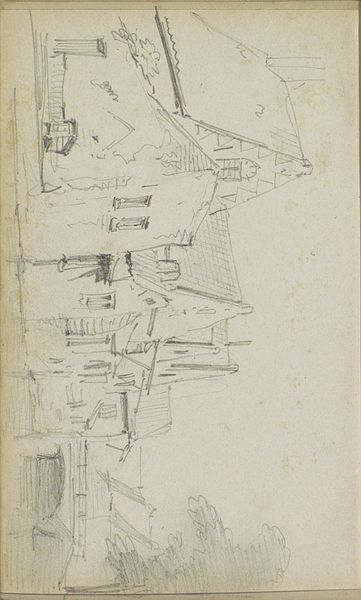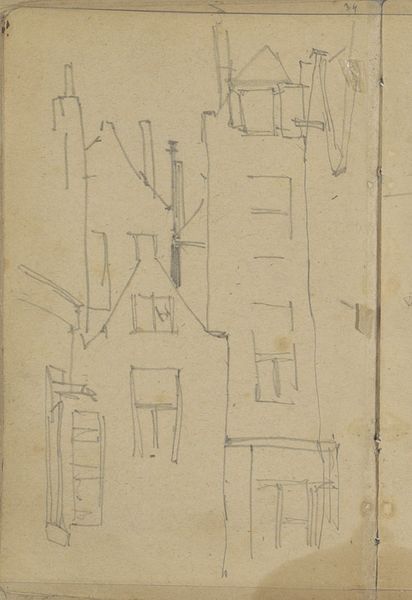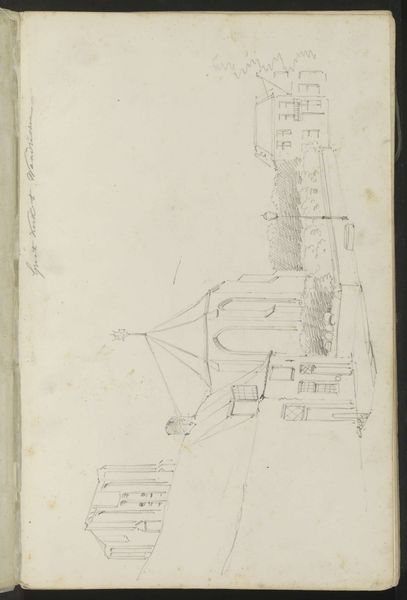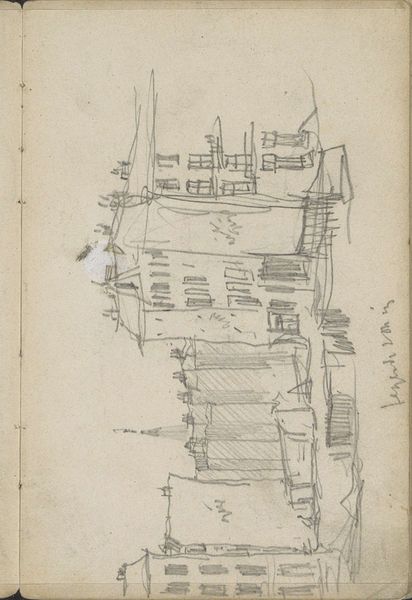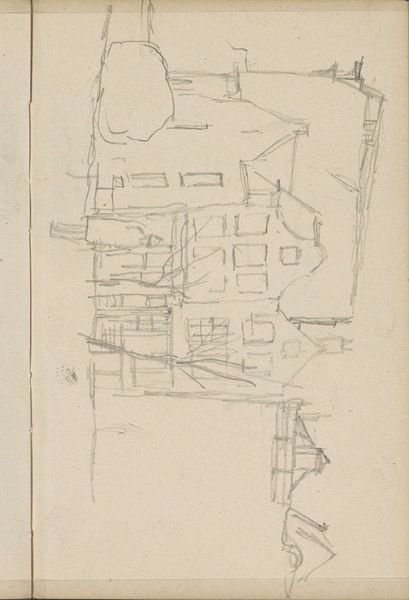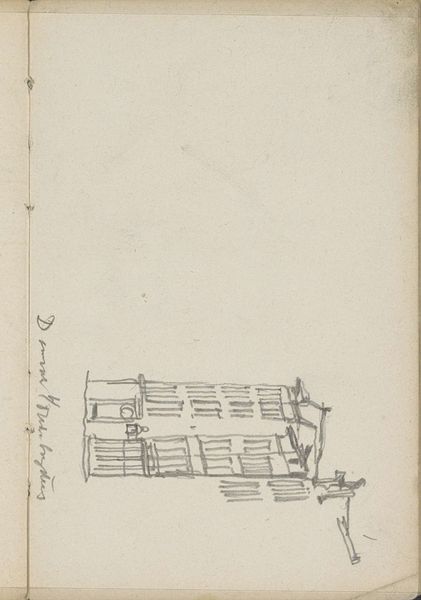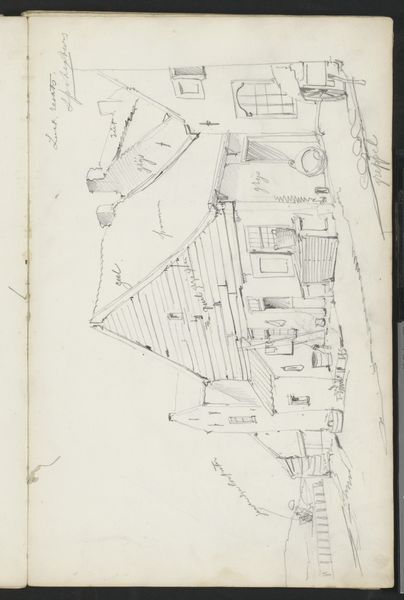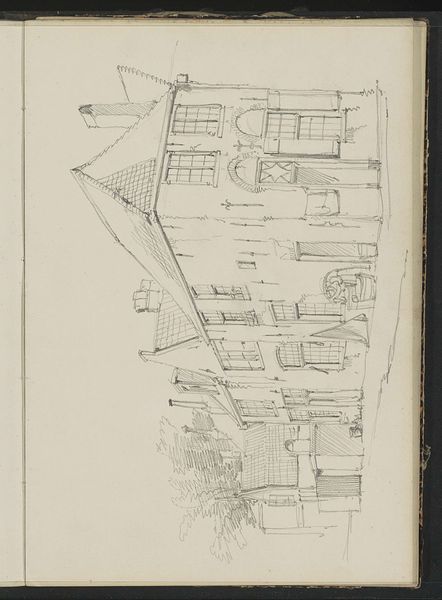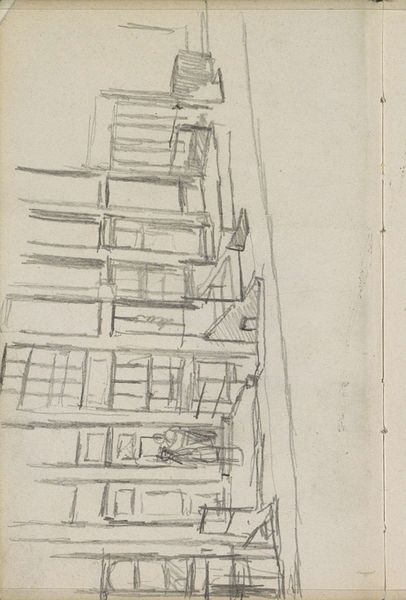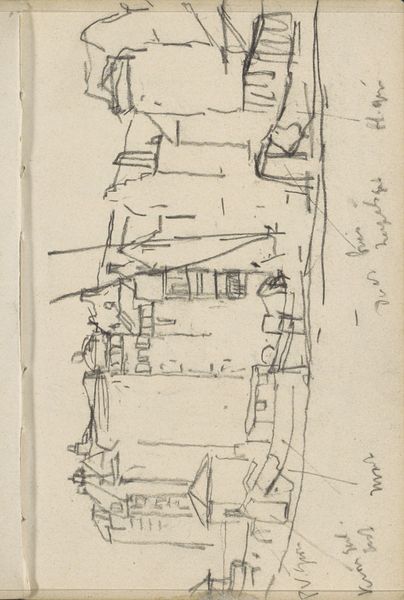
Gezicht op gebouwen in de buurt van de Houthaven te Amsterdam c. 1900 - 1901
0:00
0:00
georgehendrikbreitner
Rijksmuseum
Copyright: Rijks Museum: Open Domain
Curator: Here we have George Hendrik Breitner’s “Gezicht op gebouwen in de buurt van de Houthaven te Amsterdam,” a pencil drawing created around 1900 or 1901. It resides here at the Rijksmuseum. Editor: It strikes me as a wonderfully immediate record. There's something so raw and unedited about a sketchbook page like this, capturing the industrial area. It seems less concerned with conventional beauty and more with lived reality. Curator: Exactly. Breitner was deeply engaged with portraying the everyday life of Amsterdam. This sketch is revealing precisely because it's unpolished, like a visual shorthand. The Houthaven area, near the port, was experiencing significant transformation at the turn of the century. These evolving docks served as potent symbol to society and industry, with expansion and transformation as a common experience. Editor: It really resonates with that period of rapid change. One almost smells the coal smoke and feels the chill of the Amsterdam canals. There's a definite moodiness, heightened by the simplicity and the gray pencil on aged paper. One is moved by the idea of what kind of buildings these were, too: factories, workshops, perhaps social houses? The visual symbols of the city hint to cultural and functional values of the structures, each brick with a silent testimony. Curator: Yes, it lacks the romanticism often associated with cityscapes, presenting instead a very pragmatic view. It showcases the architecture born of industrial necessity and working-class life. Even the sketchwork feels indicative of constant activity, capturing something transient. Editor: So, in essence, a snapshot of urban development? What might the implications have been? In its seemingly casual strokes, the drawing encapsulates a specific historical moment in Amsterdam's ever-changing urban fabric. The fact that Breitner felt drawn to capture these less conventional aspects says volumes. Curator: Absolutely. It compels us to consider how socio-political and economic currents manifest even in quick sketches and studies. Breitner captured the unvarnished truth of Amsterdam at a critical juncture. Editor: It’s remarkable how this small, understated work opens up layers of reflection on urban life. One sees how societal transformation marks itself onto our cities – and our artistic visions of them. Thank you!
Comments
No comments
Be the first to comment and join the conversation on the ultimate creative platform.

